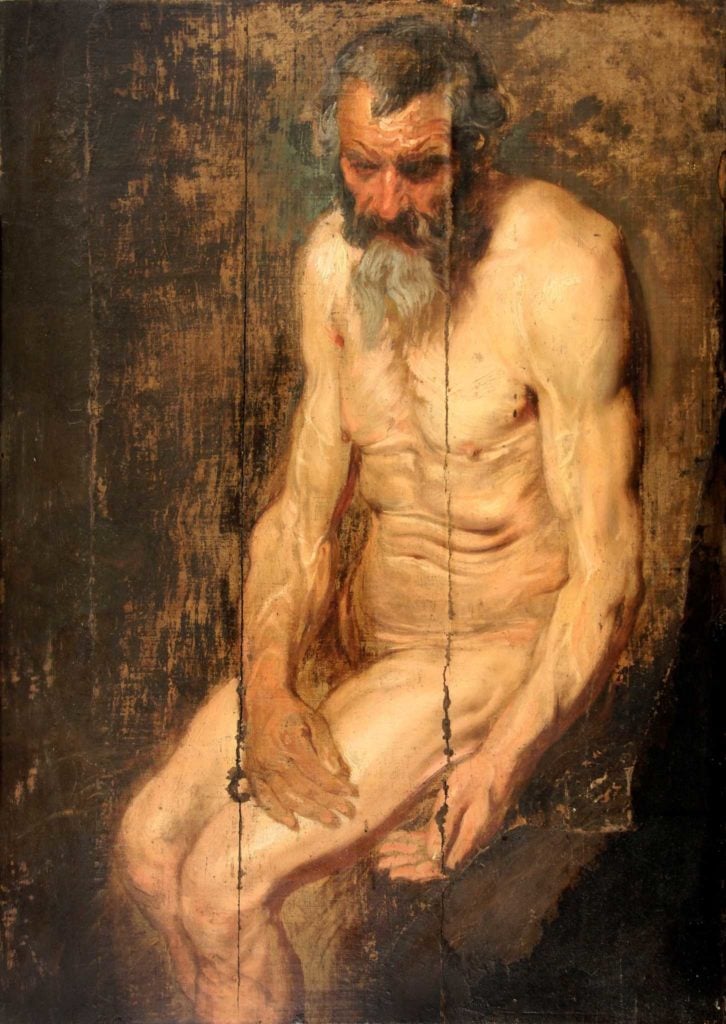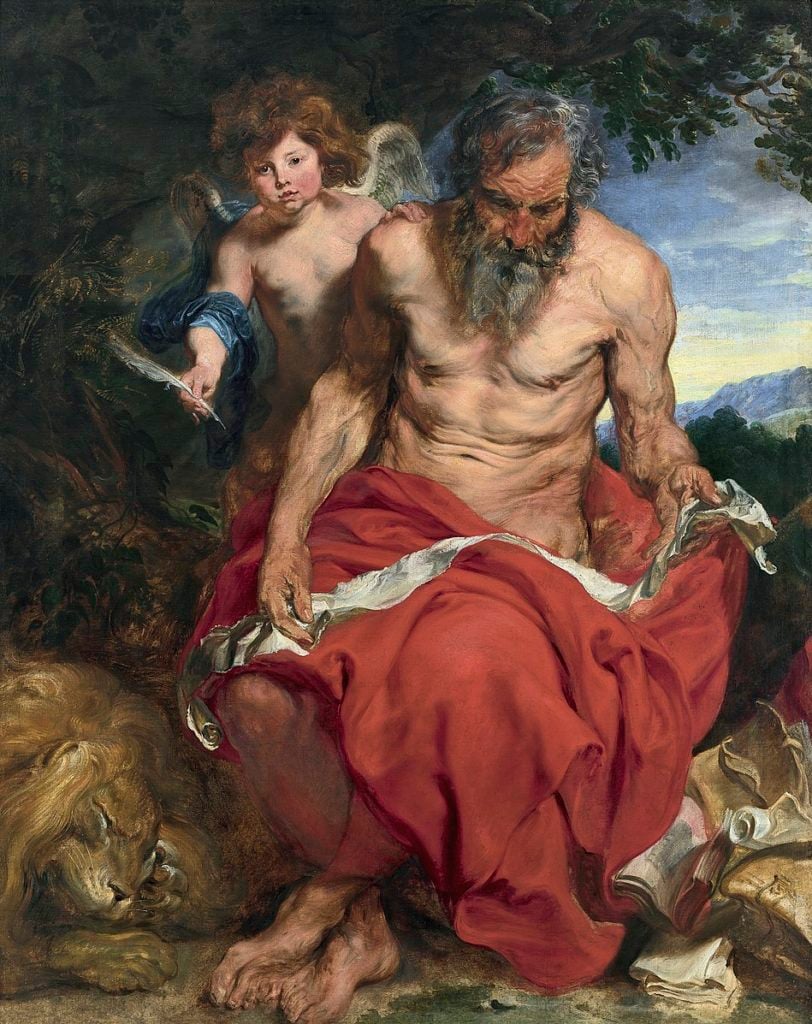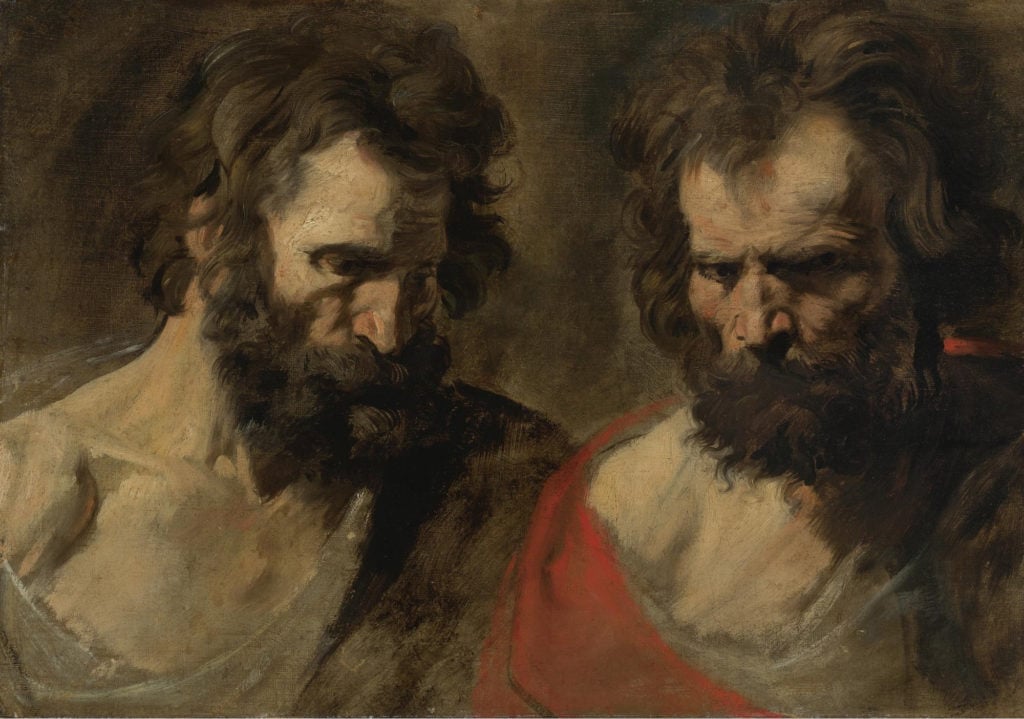On View
An Obscure Portrait of St. Jerome, Purchased for $600 at a Small-Town Auction, Is Actually a Rare Anthony van Dyck Painting
The painting is the subject of an exhibition at the Albany Institute of History & Art.

The painting is the subject of an exhibition at the Albany Institute of History & Art.

Sarah Cascone

Albert B. Roberts, an 87-year-old art collector in Hudson, New York, has spent decades snapping up obscure works at auctions and estate sales. So, as unlikely as it may seem, he wasn’t surprised when a cracked, weathered oil painting he picked up for just $600 at an auction in Kinderhook back in 2002 proved to be an early work by Dutch Old Master Anthony van Dyck.
“What’s exciting for me is the chase,” Roberts told the crowd as the painting was unveiled at the Albany Institute of History & Art this week, according to the Daily Gazette. “I’ve devoted the last 30 years of my life to the search for art that I like to call ‘orphaned’ art, that for one reason or another has been neglected, overlooked, perhaps lost in the shuffle of the art world in different countries.”
The newly discovered oil sketch, which features an elderly Saint Jerome, is on view in a special exhibition at the museum for the next two-and-a-half weeks, reports the Albany Times Union. Roberts, a board member, has donated close to 50 works to the Albany Institute over the years.
Roberts suspected the painting was the work of Van Dyck from the get-go, but it was several years before he attempted to get a proper authentication.

Anthony van Dyck, Saint Jerome with an Angel (circa 1618–20). Courtesy of the Museum Boijmans Van Beuningen.
With the help of Van Dyck scholar Susan J. Barnes, Roberts was able to confirm his hunch. The painting is a study for Saint Jerome With an Angel, completed around 1620, which now belongs to the Museum Boijmans Van Beuningen in Rotterdam, the Netherlands. The finished oil painting is about twice the size of the new-found study.
“Though the artist was about eighteen years old when he painted it (400 years ago), he was a precocious talent and already a master,” said Barnes in a statement. “Van Dyck painted his sketch from a living model, carefully rendering his furrowed, sun-weathered brow and time-worn body. His goal was to convey the sense of the saint as a real person—one with whom faithful viewers could identify and whom they could aspire to emulate.”
The painting is in need of restoration, and hasn’t been framed for the exhibition. “We wanted you to see the work in its pristine condition; its pristine condition happens to include bird droppings on the back,” said Roberts.

Anthony van Dyck, Two Studies of a Bearded Man, sold for $7.25 million at Sotheby’s New York in 2010. Courtesy of Sotheby’s.
But even taking such issues into account, the work is undoubtedly worth far more than the $600 Roberts shelled out to purchase it. According to the artnet Price Database, Van Dyck’s auction record is £8.3 million ($13.5 million), set at Sotheby’s London in 2009 for a self portrait of the artist, now housed at London’s National Portrait Gallery. And even the artist’s studies have the potential to bring in millions—Van Dyck’s third-biggest sale was for Two Studies of a Bearded Man, which brought in $7.25 million at Sotheby’s New York in 2010.
Roberts says that his decades of snapping up obscure works at auctions and estate sales have made him an expert on identifying overlooked masterpieces. “I’ve developed a method for examining works of art to seek attribution, a sophisticated if highly unorthodox method that I’ve described in detail in a book I’ve just written,” he said, adding that he hopes to publish it next year.
“Al has a keen eye, photographic memory, and a passion for research. He is also a very patient man. In some cases, he conducts his research on what he describes as his ‘orphaned art’ for decades,” said Albany Institute director Tammis K. Groft in a statement from the museum. “This story is pretty exciting, and we are thrilled to host the opportunity to display this remarkable find.”
“‘An Orphan No More’: Recently Discovered Oil Sketch by Anthony Van Dyck” on view at the Albany Institute of History & Art, 125 Washington Ave, Albany, September 18–October 6, 2019. General admission is $10.